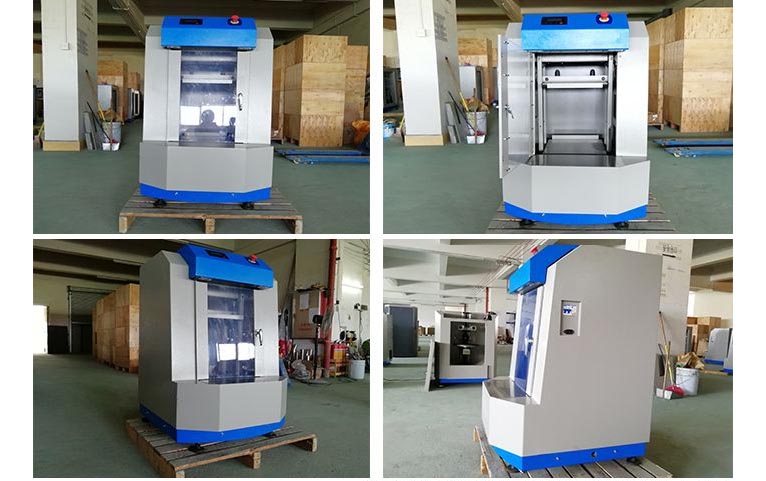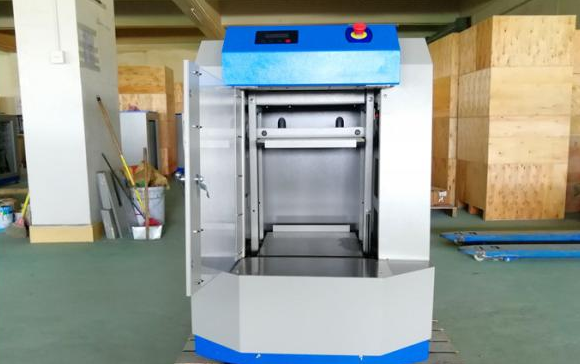In the professional painting industry, the quality of the final coat depends heavily on consistent paint mixing. Traditional manual mixing is labor-intensive, inefficient, and inconsistent—especially with large volumes. This is a major challenge for the industry. It is particularly difficult with standard 5-gallon (18.9 L) containers, where fast and uniform mixing is essential.
The advent of the industrial-grade 5-gallon paint mixer has revolutionized this landscape. Designed for large-volume use, this professional mixer employs a powerful 750W motor and high-frequency oscillation (710 cycles per minute). It offers the industry a reliable new mixing solution. This article examines the device’s technical specifications, performance advantages, and application value.
This device is powered by a robust 750W industrial motor. It uses pure copper coils and high-grade electromagnetic steel for reliable, high-load performance. Its high-torque design easily handles even the most viscous coatings, including industrial materials like epoxy resins and polyurethane.
The high-frequency oscillating motion of 710 times/minute is precisely calculated. This frequency prevents vortex formation and splashing, which are common issues at higher speeds. Instead, the mixer uses a unique planar circular oscillation. This motion creates a powerful 3D flow inside the container, ensuring a perfectly seamless blend.
The machine is optimized for standard 5-gallon containers. The clamp features an adaptive adjustment mechanism. It securely fits standard 5-gallon containers from different manufacturers for safe operation.
The machine features a full steel frame, with critical load-bearing parts made from heat-treated, high-strength alloy steel for industrial-grade fatigue resistance.
A specialized rubber damping system in the oscillating mechanism reduces noise to below 75 dB, creating a quieter workspace.
With an IP54 rating, the unit is protected against dust and water splashes, making it suitable for demanding paint shop conditions.
The epoxy spray-coated surface provides strong corrosion resistance and durability in various chemical environments.

In large-scale construction applications, batch consistency directly impacts project aesthetics. Traditional manual mixing of 5-gallon containers typically requires 15-20 minutes with inconsistent results. The professional shaker completes thorough mixing in just 5-8 minutes, improving efficiency by over 60% while guaranteeing color and viscosity consistency.
For exterior wall projects where multiple containers of the same color must be used, the machine’s mixing capability ensures perfect consistency between batches, completely eliminating visible color variations.
Industrial protective coatings are highly viscous with high solids content, which makes them nearly impossible to mix by hand. This mixer tackles that challenge with 750W of power and 710 oscillations per minute. It effectively breaks up pigment clusters and evenly distributes settled solids. For two-part coatings like epoxy and polyurethane, the rapid mixing ensures the curing agent fully integrates with the base material, preventing the risks that come with incomplete curing.
Automotive refinishing demands exceptional color accuracy where minute variations become immediately visible on vehicle surfaces. The high-efficiency mixing ensures uniform distribution of metallic flakes or pearl pigments in automotive paints—a level of consistency impossible to achieve through manual mixing.
The equipment significantly reduces paint preparation time, dramatically improving workflow efficiency in fast-paced collision repair environments and reducing vehicle cycle times.

Basic installation requires a work surface levelness error of no more than 0.5° and a load capacity of at least 200kg. Power supply must match the equipment’s electrical specs; use an independent overload protector.
Before first use, run a no-load test: check the swing mechanism runs smoothly, with no abnormal vibration or noise.
When adjusting the fixture, ensure concentricity error between container and swing spindle stays under 1mm after clamping.
1.Preparatory Phase
Check container seal integrity to ensure no leakage risk
Remove any debris from the container’s exterior to prevent contamination
Confirm paint type and recommended mixing time
2.Clamping and Positioning
Place the container firmly in the center of the clamp
Tighten the clamp handles symmetrically to ensure even force
Confirm the container is securely fixed and not loose
3.Parameter Setting and Startup
Set mixing time based on paint viscosity:
Low-viscosity water-based paints: 3-4 minutes
Medium-viscosity oil-based paints: 5-6 minutes
High-viscosity industrial paints: 7-10 minutes
Start the machine and observe initial operation. Confirm smooth operation and enter unattended mode.
4.Completion and Unloading
After the machine automatically stops, wait for the rocking mechanism to come to a complete stop. Release the clamp and remove the container.
Clean the work area and keep it tidy.

Establish a paint mixing parameter database to record optimal mixing times for different brands and types of paint. Regularly verify mixing results, using sampling and testing to assess mixing uniformity, and continuously optimize process parameters. Economic Benefit Analysis
For a medium-sized coatings company averaging 20 5-gallon paint barrels daily, here are the calculations:
Manual mixing hours: 20 barrels x 0.3 hours = 6 hours
Machine mixing hours: 20 barrels x 0.1 hours = 2 hours
Daily labor savings: 4 hours
Based on average labor costs, monthly savings can reach thousands of yuan
Compared to manual mixing, machine mixing boosts paint utilization by 3-5%, cutting bottom sediment waste. These savings is particularly significant for high-priced industrial coatings. Based on a monthly usage of 80 barrels of paint, annual material cost savings can reach tens of thousands of yuan.
Uneven mixing often causes painting quality issues that require rework, adding extra material and time costs. Specialized equipment cuts such quality issues by over 80%, sharply reducing quality costs.
Clean the equipment surface after daily use and inspect the flexibility of the clamping mechanism. Lubricate moving parts and inspect electrical connections weekly. Do a full monthly inspection, checking motor carbon brush wear and the reduction mechanism’s operation.
Develop quarterly maintenance and annual overhaul plans:
Quarterly maintenance: Replace lubricants and check the performance of the vibration damping system.
Annual overhaul: Complete disassembly and inspection, replacement of wearing parts, and precision calibration.
Establish equipment maintenance records, recording the details of each maintenance session and any issues found, to achieve predictive maintenance.
The new generation of mixing equipment is moving towards intelligence, including:
Parameter memory: Storing optimal mixing parameters for different coatings
IoT access: Remotely monitoring equipment operating status and usage
Adaptive control: Automatically adjusting mixing parameters based on coating viscosity
Energy-saving and environmentally friendly innovations
Equipment makers are developing more energy-saving drive systems. With high-efficiency motors and smart power control, they cut energy use by over 30% without sacrificing performance. Noise control tech is also advancing, aiming to keep operating noise under 70 decibels.
New materials boost equipment durability—like swapping metal for engineered plastics to cut weight, or using special alloys to enhance key components’ wear resistance. Precision manufacturing ensures greater accuracy and longer service life.
1.Key Technical Evaluation Points
When purchasing equipment, focus on the following:
Powertrain reliability: motor brand, power margin design
Structural rigidity: frame material thickness, connection method
Safety: overload protection, electrical safety rating
After-sales service: technical support and spare parts availability
2.Comprehensive cost-performance analysis
Don’t just focus on the initial purchase cost; consider also:
Total cost of ownership over the lifecycle
Energy consumption and maintenance costs
Benefits from improved productivity
Reduced losses from improved quality
It is recommended to choose a brand with a strong industry reputation and comprehensive after-sales service to ensure long-term, stable operation of the equipment.
The 5-gallon paint shaker isn’t just a labor-saver—it’s a tech upgrade that boosts industrial coating operations with better quality, lower costs, and stronger performance. It shakes 710 times a minute, with a 750W motor, delivering pro-grade mixing that handles even the toughest applications. And it delivers fast ROI and lasting value, thanks to reliability and efficiency.
In today’s competitive industrial landscape, consistent quality and operational efficiency often separate top performers from the rest. Investing in professional mixing technology is no longer optional—it’s essential. The benefits are clear: better finish quality, reduced material waste, lower labor costs, and decreased application risk. This isn’t just a piece of equipment; it’s a strategic improvement to your entire operation.
Coating materials and methods keep evolving. A reliable, capable mixing setup lets businesses adopt new technologies—no more being held back by outdated tools. The right mixer meets today’s needs. It readies your operation for tomorrow’s opportunities. And it fuels growth and adaptability in a fast-changing market.